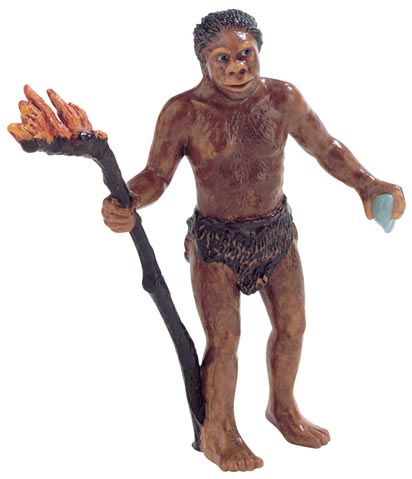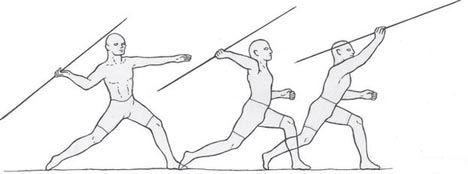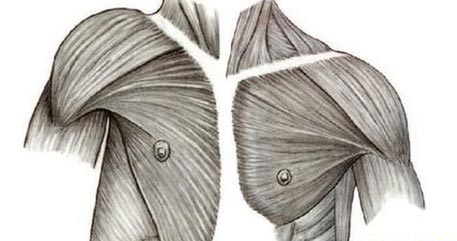The Evolution of the Ability to Throw
Study of Homo erectus Fossils Suggest that Early Hominins Had the Ability to Use Projectile Weapons
Our shoulder joints are effectively a loose fitting “ball and socket” joint. The shoulder joints in humans have given our arms great manoeuvrability and mobility. However, as a relatively loose fitting joint with a large degree of motion, injuries can occur.
The Shoulder Joint
The ability to use our arms and shoulders to throw an object, something like a roughly shaped spear, could have enhanced our ancestor’s ability to hunt game. The addition of more meat into their diet would have enabled them to grow larger bodies, develop bigger brains and to raise more offspring, thanks to better, protein rich nutrition. Research by a team of scientists from George Washington and Harvard universities (United States), suggests that shoulders capable of hurling an object at speed evolved some two million years ago.
The research paper, published in the academic journal “Nature” proposes that Homo erectus evolved the ability to throw.
Homo erectus
H. erectus was a long-lived species of hominid. It evolved around two million years ago and survived at least until about 300,000 years ago, this makes it the longest surviving species of hominid known to science. These ancient hominids evolved in Africa but spread into south-eastern Europe and Asia. Although very different looking to modern humans with their long, low skulls and distinctive brow ridges they used fire and made sophisticated stone tools. Intriguingly, they were the first species along the human branch of the hominid family tree to live environments outside their African savannah homelands. Their brains were also considerably bigger than earlier human ancestors.
Could the ability to hunt using throwing spears have enabled Homo erectus to master new environments?
Homo erectus – The First Hominid Species to be Able to Throw a Projectile?
Picture credit: Everything Dinosaur
For models and replicas of prehistoric animals and early hominids: Bullyland Prehistoric Life Models.
Use of Stop-motion Photography
The American research team used stop-motion photography to capture the range of movement and muscle action when college athletes were involved in throwing activities. They then compared their studies with the anatomy of chimpanzees. The team discovered that humans have the ability to throw at very high speeds, much faster than our closest living relative, the chimpanzee. Professional athletes can reach speeds in excess of ninety miles per hour, whilst chimps, although with stronger arms and superior grip strength, they can only reach throwing speeds of twenty miles per hour.
The bio-mechanics of the throw action was analysed and it was observed that the shoulder performs like a sling-shot as the arm rotates backwards.
The Evolution of Our Ability to Throw
Picture credit: Neil Roach
The picture above shows that the maximum shoulder rotation (pictured middle) is when elastic energy is able to power the throw.
Store Elastic Energy
The ligaments and tendons surrounding the shoulder then stretch and store elastic energy, which powers the forward throw. When this energy is released it generates what scientists found was the fastest motion the human body produces.
Neil Roach, (George Washington University) who led the study, stated that the changes in the anatomy of early humans enabled energy storage in the shoulder that permitted fast throwing. From this evidence it could be implied that more effective hunting methods could have come about.
He went onto add:
“Success at hunting allowed our ancestors to become part-time carnivores, eating more calorie-rich meat and fat and dramatically improving the quality of their diet. This dietary change led to seismic shifts in our ancestors’ biology, allowing them to grow larger bodies, larger brains, and to have more children, and it also did interesting things to our social structure. We start to see the origins of divisions of labour around that time, where some would be hunting, others would be gathering new foods. It probably also allowed us to move to new environments, such as areas that did not have vegetation to support us before we had the ability to hunt.”
The Throwing Action
Professor Daniel Lieberman, (Harvard University) declared that for him the most fascinating aspect of this research was that half the power the humans generate from the throwing action comes from elastic energy stored in the shoulder muscles.
He commented:
“That’s not a by-product of evolution for something else, it’s clearly an adaptation. There were shifts in our anatomy that enabled us to throw accurately, so we want to understand better just what those early hunting challenges were.”
With no evidence of spears having been found in the earliest fossils of H. erectus, this interpretation of fossil material by the American team has raised a few eyebrows (or should that be brow ridges). Other scientists, including those that specialise in studying human and other primate anatomies have suggested that a more holistic approach to comparative anatomy be used.
Comparing Human Anatomy with that of a Chimpanzee
Picture credit: Brian Roach/Neil Roach
Professor Susan Larson from Stony Brook University, (United States), a scientist not involved in the study, has queried the conclusions drawn from this research. Her work also focuses on the shoulder anatomies of primates and humans in order to study their evolution. She said it could be easy to over interpret what was significant from a fossil.
“We’re looking at the same fossils, it’s a question about how you interpret the anatomy that you see in those fossils. Homo erectus was not necessarily such a proficient thrower. I think [Dr Roach and colleagues] are discounting the combination of features of how the shoulder as a whole has to work.”
The few fossils of Homo erectus arms and shoulders suggest that they had an extensive range of movement. Their hands too, were very capable of manipulating objects and showing great dexterity, however, more work is required before such conclusions can be made.
Professor Larson added:
“You cannot look at just one thing and say how a complicated piece of anatomy works, especially something like the shoulder. You have to understand how all parts work together to bring about a broad range of motion.”
One interesting point to note, if ancient hominids like H. erectus were throwing spears, chances are they would favour either the left or right hand. The paper has been regarded as an interesting hypothetical model rather than a definitive explanation of fossil evidence by many scientists working in this field. For example, the humeral torsion, the angle at which the head of the humerus (funny bone) articulates with the scapula (shoulder bone) in H. erectus specimens does not fall within the range of modern throwing athletes.
There is also no evidence of asymmetry in the humeral torsion angle in H. erectus fossils that one would expect if one limb was preferred over the other for throwing.
Interesting thought, those ball tosses at Wimbledon by today’s tennis players may have a very ancient evolutionary lineage.




